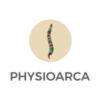Osteopathy is a preventive medicine, which aims to obtain and maintain the balance of the nervous, circulatory and osteoarticular system, leading the patient to recovery without the use of drugs or surgery.
Osteopathy is a system of evaluation and treatment that does not involve the use of drugs or surgery. Osteopathy uses specific manipulations and manoeuvres that are effective in the prevention and treatment of disorders of the musculoskeletal system, functional alterations of organs and viscera and of the cranio-sacral system.
Osteopathy aims to restore the harmony of the skeletal support structure in order to allow the body to find its own balance and well-being leading the body to self-care.
Osteopathy, thanks to the principles on which it is based, intervenes on people of all ages, from the newborn to the elderly, pregnant women and sportsmen.
The different types of osteopathic approach:

Fascial approach
Techniques aimed at the muscle or fascia, using continuous palpatory feedback to achieve myofascial tissue release. These techniques act on the fascia and its relationship between musculoskeletal disorders, pain and tension and the overall state of the fascia, improving mobility.
Visceral approach
Techniques that restore the mobility and motility (expression of cellular vitality) of an organ. These techniques allow to stimulate the organ towards a correct digestive function, absorption or expulsion, both in a more mechanical and in biochemical field.
Cranial approach
Techniques that act on the movement of congruence between the bones of the skull, going to act on the bone, nervous, meningeal and Cephalorachid fluid level. These techniques act in particular on the vitality of the organism, a fundamental quality that allows living beings to react effectively to disturbing events from the external and internal environment.
Treated Pathologies
Neck Pain
Low Back Pain
Sciatica
Arthroses
Discopathy, Disc Hernia
Headache and Migraine
Joint and Muscle Pain From Trauma
Alterations In Balance
Neuralgias
Congestive Diseases Such As Otitis and Sinusitis
Gynaecological and Digestive Disorders

